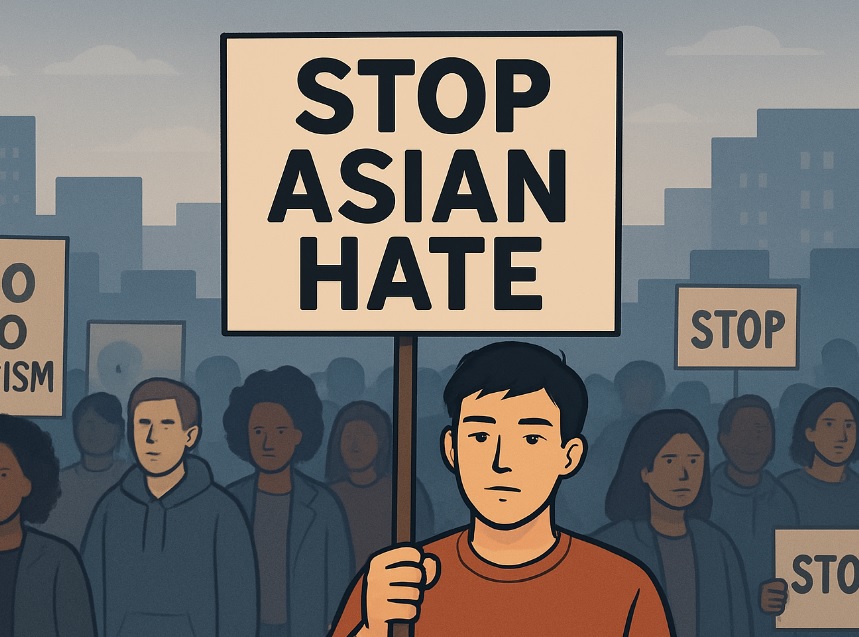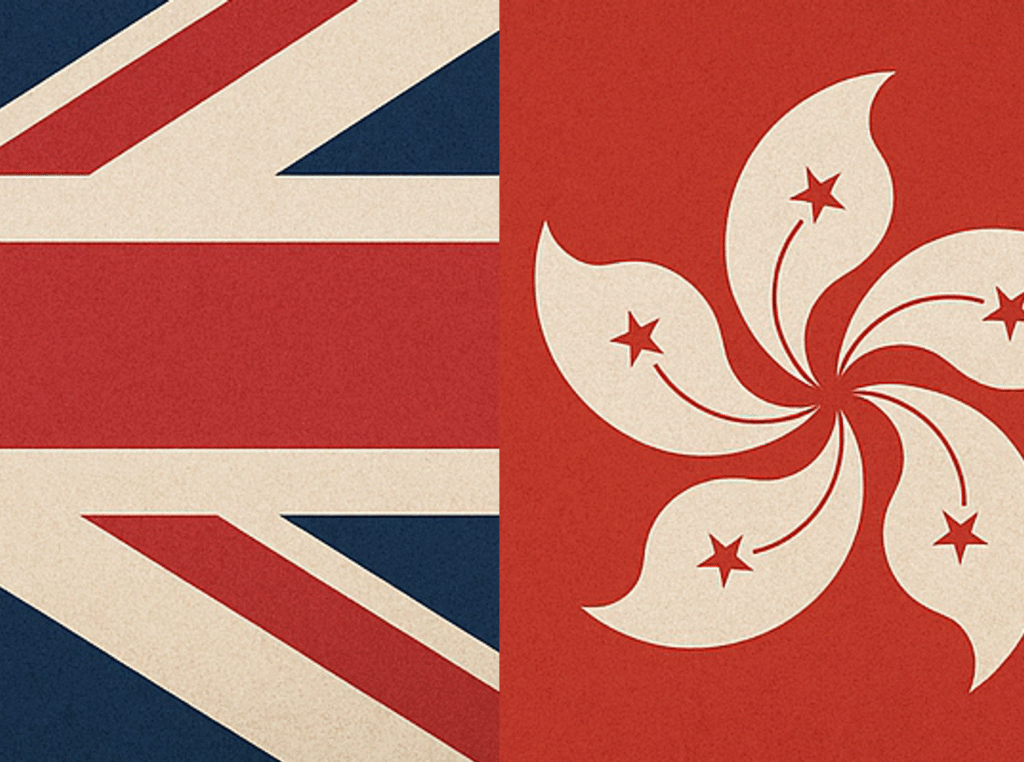
Racial tensions have been building up in recent years as the United Kingdom witnessed a wave of ‘anti-asylum hotel’ protests against asylum-seeker accommodation, rippling across the UK—from Epping and Bristol to London and Liverpool. These demonstrations, often local based, have escalated into disorder on several occasions nationwide. The surge of anti-immigration sentiment has been pushed by political polarisations. Stirring anxieties that not just become smears but have led to recent cases of harassment, abuse and violence towards minority groups. Even among the most vulnerable are East and Southeast Asians (ESEA) in the UK many of whom, even if British-born or long settled legally, stirred fears that echo back to the pandemic years.
Whilst the ESEA community are not necessarily the direct target of the present migration or asylum seekers debate, still we find ourselves caught in the crossfire and unavoidably drawn into the atmosphere of xenophobia and hostility they create. What’s at stake goes beyond temporary animosity; it involves the resurgence of a longstanding racial stereotypes that exists at the crossroads of racism and immigration policy. The latest wave of anti-immigrant anger and ‘far-right’ rhetorics has revived these feelings back to the surface.
In recent times, we’ve witnessed how rapidly public discontent over economic insecurity or governmental failings can be redirected towards migrants and visible minority groups. This surge in attacks and harassment is not merely an outpouring of prejudice, but rather the outcome of a political landscape that intertwines anti-immigration sentiment with racial animosity. In this sense, the underlying tension reflects the deeper social fractures within contemporary Britain. The “foreigner” narrative provides the framework, fueled by populist narratives and individuals become the targets when they represent the perpetual differences.
Racism and Anti-Immigration Rhetoric
It’s harrowing to see the persistent patterns of abuse and attacks that East and Southeast Asians across Britain are facing. These dynamics don’t just exist within academic debates or theoretical frameworks, but very real and devastating experiences. Recent news stories illustrate how xenophobia and racial hostility translate directly into violence, intimidation, and exclusion.
In Halifax, Filipina NHS nurse Apple Moorhouse, who has lived in the UK for over a decade, was assaulted while walking with her child. A couple mocked her with comments about “boats across the Channel,” threw water, and even ordered their dog to attack her. The incident, caught on video, has left her in distraught (IBTimes).
In York, police reported a racially motivated assault that left a student from Hong Kong injured, prompting community leaders to link the violence to the wider climate of hostility (York Press). Around the same time, a Chinese takeaway was defaced with graffiti reading “Go Home,” an act condemned as an attack on the city’s multicultural identity (York Press).
In London’s Islington borough, a 25-year-old Taiwanese woman, was allegedly assaulted by four teenage girls while disembarking from a bus. The Metropolitan Police opened an investigation, treating the incident as potentially racially motivated, though no arrests were immediately made (Taipei Times).
An Indonesian family in Glasgow was subjected to a “vile” racist attack outside a train station, where abusive language and threats were hurled at them simply because of their ethnicity. Local leaders and community groups condemned the attack, emphasising the urgent need for stronger crime enforcement (The National).
These distressing incidents sadly confirm an alarming trend. Though the abuse is not random; it echoes the language and stereotypes circulating in public discourse – phrases like “boat crossings,” “go home,” and “outsiders.” Each attack reflects the entanglement of racism with immigration politics, demonstrating how hostile rhetoric filters down from headlines and political campaign slogans into people’s everyday lives. While the police responses have been reactive, the lack of systemic action leaves vulnerable communities exposed. These stories poignantly show how East Asians in Britain remain visible contributors to society, yet profoundly susceptible to exclusion and attack.
Social Vulnerability for East Asians in Britain
Research underscores the scale of the problem. A University of Leicester study (2024) conducted with the NGO Protection Approaches found that nearly half of ESEA respondents in the UK had experienced a hate crime within a single year, yet only one in ten reported it to authorities (University of Leicester & Protection Approaches, 2024). That silence doesn’t reflect a lack of harm, but rather a rational decision — that the system is unlikely to deliver justice or protection. Many cited a lack of trust in the police or a belief that nothing would be done. This is consistent with reports by End Violence and Racism Against ESEA Communities (EVR), which documented widespread fear, avoidance behaviours and underreporting within the community. Despite repeated calls from campaigners for a national strategy on ESEA hate crime, policy measures have been minimal, reactive and short-lived.
The emotional and psychological toll is significant. East Asians find themselves trapped in a harmful cycle: during times of national distress, they become scapegoats, and when they face repercussions; such as harassment, violence, and exclusion—government institutions often remain either indifferent or dismissive. This neglect not only fails to safeguard vulnerable communities but also reinforces the notion that ESEA groups are disposable, a group whose suffering is not worthy of attention. The paradox is frustrating; East Asians are highly visible contributors and integrated into British life — from restaurants and small businesses, to academia and healthcare. Yet this visibility does not translate into security or recognition. Instead, it makes them legible targets racial harassment.
This sense of vulnerability highlights the limitations of representation. Although conversations about racism in Britain frequently focus on Black and South Asian communities, the unique manifestations of anti-Asian hostility—such as invisibility, stereotypes, and social vulnerability are seldom prioritised in public discourse. Consequently, East Asians find themselves: not only are they subjected to racist incidents, but they are also marginalized within the larger anti-racist movement.
Social Climate and Government Inaction
If there is one truth that underpins moments like these, it is that racial tension rarely exists in isolation. It is shaped by a political economy of scapegoating. Historically, minority groups have often been blamed during moments of national crisis, whether for economic downturns, the shortage of affordable housing, migrant problems, cuts to public services, stretched law enforcement, widening gaps between rich and poor that leave people frustrated. When governments and institutions fail to tackle these pressures, the frustration spills over, and it is minority groups who carry the heaviest burden. For Chinese and East Asian communities, this means being caught in a conflict that was never of our making. The protests we see today may focus on asylum seekers or immigration policy, but the ripple effects touch anyone perceived as “foreign.” In this way, we absorb the anger that comes from social problems left unresolved.
Personal Reflection and Security for East Asians in Britain
The rise in racist attacks targeting ESEA individuals in the UK cannot be overlooked as mere isolated incidents or unfortunate side effects of broader social issues. They stem from deep-rooted historical patterns, including the persistent view of East Asians as perpetual foreigners, the harmful blend of racism with anti-immigration sentiment, and the tendency of political scapegoating while neglecting to provide meaningful solutions. The outcome is East Asians feel hyper-visible as targets of hate, yet simultaneously invisible in the national dialogue on racism. Statistics, testimonies and news reports consistently illustrate that East Asians across Britain are facing harassment, exclusion and fear, with little assurance that their concerns will be acknowledged by the state or society at large.
For British-born ESEAs, this moment challenges the essence of belonging. Many of us were raised with the belief that diligence, education and quiet contribution would lead to acceptance. However, the current climate reveals the fragility of that belief. Belonging, it seems, depends on society’s willingness to view us as part of its narrative. Moving forward requires more than reactive condemnations from politicians. It demands sustained recognition of East Asian struggles within Britain’s anti-racist motives, stronger measures of protection and a shift to a reasonable public discourse away from blame.
On a personal level, I write this not only as a social critique but as reflection. Nobody should be subjected to any form of public violence or harassment, regardless of their identity or resident status. Like many British born Chinese or any ethnic groups who have integrated into British culture and society, my hope is to present these realities to the forefront. By refusing to remain invisible and silent, we can push the conversation forward, where the fear of being targeted simply for our ethnic background becomes a thing of the past.
